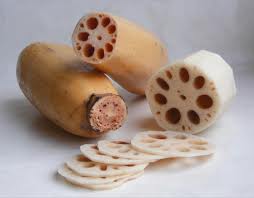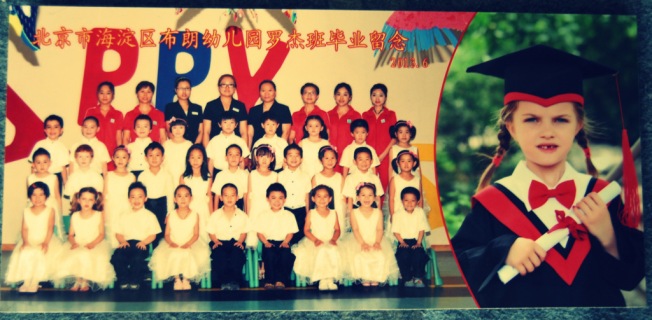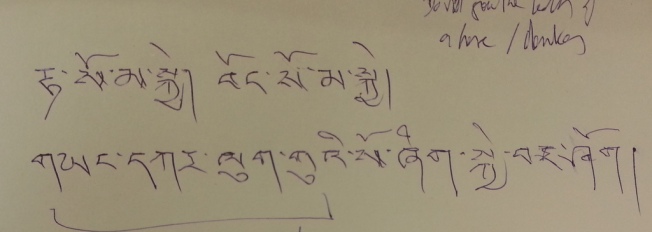After living in Beijing for the past six months, we’ve not only had lots of opportunities to see and experience everyday life here in China, but we’ve also hit a lot of the tourist hot-spots. With all there is to see in a city with a population of 20+ million and a wealth of historical sites, I’ve put together a list with photos of our favorite places/must see spots. Since some of these places are obvious, I’d put them in the “usual suspects” category. Others are top recommendations, but may not be included in a several day itinerary of a visit to the capital. I’m also adding a few places that I wouldn’t recommend visiting, unless you have a lot of time, or a really specific interest.
1. Tiananmen Square: with all of the modern history in this massive square in the very heart of the city, it’s a good first stop. At the famous Tiananmen Gate with Chairman Mao’s face looking out across the square, you’ll also get your first sense of where Chinese tourists go (and there are a lot of them!). Traveling to Tiananmen Square is a essential visit for Chinese coming from all over the country, where you can see the Great Hall of the People on one side of the square and the National Museum of China on the other. Mao’s mausoleum is in the center of the square, where you can visit Mao’s preserved body (I tried to check it out one day with Isabel and Sophia, but the crowds and heat were so overwhelming that we changed our plans), something that is emotionally moving for many Chinese. I also considered getting up very early for the daily sunrise flag-raising ceremony (nationalism in China and the U.S. are quite similar!), but could never quite find the motivation to go (with three young kids, sleep is at a premium!).

Mao dominates the square
2. While in the Tiananmen area, visiting the Forbidden City is another usual suspect must-see. Getting a sense of what life might have been like for the Chinese emperor and his consorts, wives, and eunuchs (no non-castrated men were allowed to sleep in the walled city) in this yellow-roofed massive complex of halls, houses, and gardens really shouldn’t be missed.
3. Visiting at least one Chinese park is at the top of my list. There are so many to choose from (Beihai, Jingshan, the Summer Palace, the Old Summer Palace [Yuanmingyuan], Ritan, Ditan, the Temple of Heaven, the Beijing Botanical Gardens, Purple Bamboo, etc.) and walking around amidst the cultivated beauty, while watching any of the many group activities that Chinese people regularly take part in, is an essential component of any visit (see my previous posts: Parks in China: Breathing Life into Sprawling Cities and What Makes Them Uniquely Chinese and The Lotus Festival in Beijing’s Purple Bamboo Park). If you’re in the Forbidden City area, visiting Jingshan Park and climbing the highest hill in Beijing, on a clear day, will give you a 360 view of the city and a chance to look directly into the Forbidden City from above.

View of the Forbidden City from Jingshan Park

The tree where the last emperor of the Ming Dynasty hung himself: enter the Qing Dynasty!

Kunming Lake in the Summer Palace

Plying the lotus waters at Purple Bamboo Park

Fan dancing

Isabel in a peach tree (Beijing Botanical Gardens)
4. The Great Wall: of course you’ve got to see it. If you can skip the highly touristy Badaling area and head to at least Mutianyu, I’d recommend it (you can take a cable car up, walk along the wall for awhile, and then toboggan down on a cement track: surprisingly fun and safe with kids!). I really wanted to visit the Jinshanling section of the wall too, as the photos I’ve seen are spectacular, but we ran out of time.

Mutianyu section of the Great Wall
5. Sanlitun Village and Yashow Market in Sanlitun: we came to love the Sanlitun area, with its combination of very high-end retail shops and more middle class stores and restaurants. It’s a great place to see the “new China” in all its consumerist glory, as well as to walk around in a beautiful outdoor mall space (there’s a mall beneath the area as well) with changing art installations and store/brand promotions. Right next to Sanlitun Village is the six-story Yashow Market with floor after floor of knock-offs. This is the other side of China’s consumer (and production) culture and is the perfect balance to the fancy real name-brand shopping just steps away. While a lot of tourists may prefer the Silk Market (we bought the silk for my wedding dress and all of our bridesmaids’ and groomsmaids’ dresses there back in 2002), with limited time, I’d recommend just hitting Sanlitun. Similarly, a lot of tourists visit the snazzy Wangfujing shopping area, but I’d recommend Sanlitun Village over Wangfujing.
6. Take at least one taxi ride around the Central Business District (CBD) area (and other areas of the city too) to see the architecture of recent dreams. Especially cool is the CCTV building, the various SOHO buildings throughout the city, the Global Trade Center towers, etc.

SOHO Galaxy Building

SOHO Galaxy

near “The Place” in CBD

the National Library

New architecture in Beijing. Caught this quick pic from a taxi of the Wangjing SOHO building.
7. Go to a Chinese acrobat show. We’d been to a couple of shows in the past, but the one we saw last week at the Chaoyang Theatre was absolutely amazing! It ended with a steel ball and eight motorcycle riders driving around inside (and upside down) simultaneously. As a bonus: we were a bit slow getting out of the theater and had a chance to meet the performers!

This ball with 8 riders inside was amazing!

Post-show
8. Capital Museum: As Manu’s recent post attests (The Capital Museum in Beijing), the Capital Museum is a gorgeous space with fantastic, focused exhibits. Skip the National Museum of China in Tiananmen Square and head over to the Capital Museum. Now that the new design of architect Jean Nouvel has been chosen for what looks to be a fantastic looking new National Art Museum of China in the Olympic Park area, in a few years it might be a different story…
9. Nanluoguxiang, or NLGX, is one of the coolest streets in Beijing. Somewhat similar to Thamel in Kathmandu, but not just catering to foreigners, this lively area near the Drum Tower (worth a visit, but we never made it since we’d already visited the Drum Tower in Xi’an) is part of the traditional remaining hutong (alley) neighborhoods. There are funky boutiques, charming bars and coffee shops, and lots of enticing snack stands on this great street.
If you’ve got specific interests, I’d also recommend:
1. 798 Art District: In this former electronics factory complex built by the East Germans, there are now streets of galleries and cafes. A couple of the galleries are impressive, but don’t expect to be impressed across the board. It’s a fun place to spend a few hours, or a day, wandering around, hanging out in cafes and doing a little shopping for unique gifts.
2. Yonghegong Tibetan Buddhist Temple Complex: If you have any connection to Tibetan Buddhism, Yonghegong is an obvious place to visit. Beginning in the 18th century, the complex maintained a connection between China’s emperors and monks from Tibet and Mongolia.
3.Peking University: Though you have to have a residency permit to enter the campus of China’s top university, if you can visit it, it’s worth walking around the beautiful grounds (there’s a stunning lake).
4. Olympic Sports Complex: Seeing the iconic 2008 Summer Olympics Bird’s Nest and Water Cube in person does give you a sense of the scale of the endeavors to build these structures, but unless you have a specific reason to visit the area, or a lot of time, I’d skip it. We walked around the fairly treeless concrete grounds in the hot sun, but the sense of national pride many Chinese undoubtedly feel did not arise in us.
5. The Beijing Zoo: While the grounds of the zoo are very beautiful, once you leave the chaos of the main animal buildings, including the overrated panda exhibit, the experience itself can be missed. While it’s not the worse zoo I’ve ever been to in terms of the space for the animals, it’s also not very impressive.
There are a few things we didn’t do that will be on our agenda for our next visit:
- The Fahaisi Temple in the Western Hills with Ming Dynasty murals that you have to view with a flashlight.
- The White Cloud Taoist Temple. Sadly, we didn’t visit even one Taoist temple while we were here.
- The Fragrant Hills Park in the Western Hills. This is supposed to be especially beautiful in the fall when all the leaves are red and gold.
- A modern dance show at the “Egg” (National Grand Theater).
- Visit the Olympic Forest Park. This huge space doesn’t have the cultivated landscaping of most of Beijing’s parks and some day I’d like to see it.
Things we didn’t do that we’ll probably never do:
- Watch a Peking Opera. The piecing voices just don’t appeal to us. We saw a bit of a Hong Kong opera and that was enough.
- Visit the aquarium. The aquarium is within the zoo complex and you have to buy a separate ticket. Although it’s got a good reputation, having taken the kids to the fantastic Monterey Aquarium and the Vancouver Aquarium, it doesn’t strike me as something we must do in Beijing. Also, I wouldn’t recommend the joint Chinese-New Zealand “Blue Zoo” venture, unless you want to feed goldfish with a bottle and watch mermaids (real live ladies in bikinis and tails!) swimming with the fish.
- Visit the Natural History Museum and/or the Planetarium. I could never gear myself up to visit what I’ve heard are very crowded museums.
Overall, our stay in Beijing has been fantastic and I’m really sorry to have to say good-bye, for now, to this lively city. I hope it’s not too long before we return again.
-Pam




































































































































































